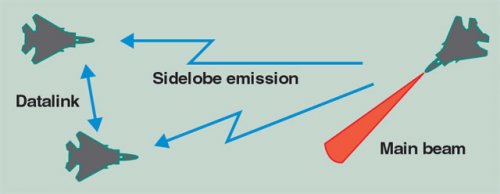JSF Radar Absorbent Coatings Applied to Raptor
By DAVE MAJUMDAR
Published: 6 Apr 2011 20:29
The newest F-22 stealth fighters produced for the U.S. Air Force at Lockheed Martin's Marietta, Ga., factory have improved radar absorbent coatings derived from the company's F-35 Joint Strike Fighter program. "Some of the [low observables] coatings system and gap-fillers that the F-35 had an advantage on, we have incorporated into the Raptor," said Jeff Babione, vice president and general manager of the F-22 program for Lockheed Martin. The new materials do not alter the F-22's radar cross-section, but do improve on the durability of those coatings. The benefit for the Air Force is a reduced maintenance burden, Babione said. "[The F-35 program] had some more robust materials that were more durable and we were able to pull those back on to the F-22," he said. "So our system is better, and the life-cycle cost of the F-22 is reduced." Dan Goure, an analyst at the Lexington Institute, Arlington, Va., agreed that retrofitting the F-22 with the F-35's coatings will save the Air Force a significant amount of time and money when it comes to maintenance. "It's not going to transform the airplane, but what it's going to really do is make it much cheaper to operate the F-22 fleet, which is terribly important given its small size," he said. Despite Lockheed Martin's statement that the F-35-derived coatings would not alter the F-22's radar cross-section, Goure said he suspects the new materials are likely to improve upon the Raptor's already impressive signature. "I would be very surprised if this wasn't an improvement in stealth characteristics," he said.
Lockheed Martin only had to make minor tweaks to the F-35's radar absorbent materials in order to adapt the technology to the F-22. Though the radar cross-section requirements for the Raptor and the F-35 are slightly different, fundamentally the physics and chemistry of the coatings are the same, Babione said. For installation into the Raptor, the F-35 coatings likely needed to be modified to deal with the high supersonic cruise-speeds and extreme altitudes at which the F-22 routinely operates, Goure said. "It's operating at a higher altitude typically and [at] faster speeds, and that would put different stresses on the material," he said. The Raptor can cruise at speeds around Mach 1.8 above 50 000 feet without afterburners. At the moment, the latest Lot 9 production F-22s only have some of the new stealth coatings installed. Other improved stealth materials "are still in final qualification testing and will enter the field next year," he said. Once testing is complete, plans are in place to retrofit the entire F-22 fleet with the coatings.

